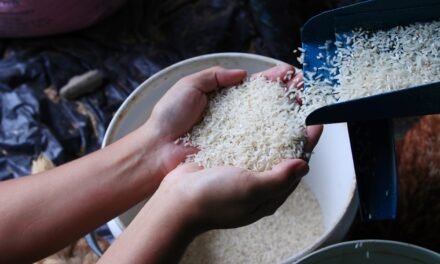Export regulations significantly influence the global trade of dairy products by shaping market access, trade volumes, pricing, and compliance requirements. These regulations are designed to ensure food safety, protect local markets, and standardize trade practices but often create challenges for exporters. Here’s how they impact the global trade of dairy products:
1. Compliance with Importing Country Standards
- Impact: Exporters must meet the specific food safety and quality standards of the importing country.
- Key Areas:
- Hygiene Standards: Compliance with microbiological limits for pathogens like Listeria and Salmonella.
- Chemical Residues: Adherence to maximum residue limits (MRLs) for antibiotics, pesticides, and hormones.
- Labeling Requirements: Products must align with local language, nutritional information, and allergen labeling rules.
- Example: The European Union enforces strict MRLs for dairy imports, impacting exporters from countries with different agricultural practices.
2. Tariffs and Trade Agreements
- Impact: Tariffs and duties affect the cost-competitiveness of dairy exports.
- Key Areas:
- Free Trade Agreements (FTAs): Reduce or eliminate tariffs, fostering smoother trade between participating nations.
- Most Favored Nation (MFN) Tariffs: Applied to countries without specific trade agreements, often resulting in higher costs.
- Example: The Comprehensive and Progressive Agreement for Trans-Pacific Partnership (CPTPP) has lowered tariffs on dairy products among member countries, boosting trade.
3. Non-tariff barriers (NTBs)
- Impact: Regulatory and procedural obstacles can hinder trade despite low tariffs.
- Key Areas:
- Quotas: Import quotas limit the volume of dairy products a country can export without incurring high duties.
- Sanitary and Phytosanitary (SPS) Measures: Strict rules on disease prevention, like testing for foot-and-mouth disease in dairy herds.
- Technical Barriers: Differences in product standards, such as fat content or packaging specifications.
- Example: Japan’s quota system for cheese imports imposes volume limits, affecting exporters from non-preferred nations.
4. Certification and Documentation
- Impact: Exporters must provide detailed documentation to satisfy regulatory requirements.
- Key Areas:
- Health Certificates: Issued by veterinary authorities to confirm the product meets health standards.
- Certificates of Origin: Verify the product’s origin for tariff classification.
- Halal Certification: Required for dairy exports to Muslim-majority countries.
- Example: The U.S. requires specific export certificates for dairy products shipped to the European Union to verify compliance with EU standards.
5. Geographic Indications (GIs)
- Impact: Protects regional dairy products, restricting the use of names like Parmesan or Roquefort to producers in specific areas.
- Key Areas:
- Exporters must use alternative names if their products don’t originate from protected regions.
- GIs influence branding and market acceptance in certain countries.
- Example: Australian exporters label their cheese as “Parmesan-style” to comply with EU GI regulations.
6. Subsidies and Domestic Support
- Impact: Export subsidies or domestic support programs in exporting countries can distort trade by artificially lowering prices.
- Key Areas:
- Export subsidies help reduce costs for domestic producers but face criticism under World Trade Organization (WTO) rules.
- Countries with high domestic support, like the EU’s Common Agricultural Policy (CAP), impact global pricing and competition.
- Example: New Zealand, a major dairy exporter, competes without subsidies, relying on efficiency to maintain competitiveness.
7. Environmental and Sustainability Standards
- Impact: Growing emphasis on sustainability adds new compliance requirements.
- Key Areas:
- Carbon footprint certifications for exported dairy products.
- Traceability systems to ensure ethical sourcing and sustainable practices.
- Example: The EU’s Farm-to-Fork strategy prioritizes environmentally sustainable imports, affecting dairy exporters from high-emission regions.
8. Volatility Due to Trade Disputes
- Impact: Political tensions and trade wars disrupt dairy trade flows.
- Key Areas:
- Imposition of retaliatory tariffs on dairy products during disputes.
- Export restrictions or bans due to geopolitical issues.
- Example: The U.S.-China trade war led to increased tariffs on U.S. dairy products, diverting trade to other markets.
9. Regional Market Dynamics
- Impact: Regional economic blocs create both opportunities and challenges for exporters.
- Key Areas:
- Exporters benefit from regional trade agreements like NAFTA/USMCA or ASEAN.
- Localized trade regulations in African or Middle Eastern markets require tailored compliance strategies.
- Example: African Continental Free Trade Area (AfCFTA) aims to boost intra-African trade, presenting opportunities for local dairy producers.
10. Emerging Market Regulations
- Impact: Rapidly growing markets in Asia, Africa, and South America have evolving regulatory frameworks that can be unpredictable.
- Key Areas:
- Shifting import rules to protect domestic dairy industries.
- Increased testing requirements for quality and safety.
- Example: India’s stringent labeling laws for dairy products require significant adaptation by exporters.
11. Currency Exchange Fluctuations
- Impact: Exchange rate volatility affects the competitiveness of dairy exports.
- Key Areas:
- Strong currencies make exports more expensive, reducing demand.
- Exporters hedge currency risks to maintain profitability.
- Example: The New Zealand dollar’s fluctuations significantly impact the country’s dairy export revenue.
12. Logistics and Infrastructure
- Impact: Regulations on shipping, packaging, and storage impact the cost and efficiency of dairy exports.
- Key Areas:
- Cold chain requirements for transporting perishable dairy products.
- Restrictions on certain packaging materials for sustainability reasons.
- Example: Exporting chilled or frozen dairy products to distant markets like the Middle East requires robust cold chain logistics to ensure quality.
13. COVID-19 and Global Health Crises
- Impact: Health crises introduce new regulations and disrupt supply chains.
- Key Areas:
- Additional health and safety certifications for exports.
- Delays due to lockdowns or changes in consumer demand.
- Example: COVID-19 led to increased demand for packaged dairy in some markets, but exporters faced logistical challenges due to port restrictions.
Strategies to Overcome Regulatory Challenges
- Trade Partnerships: Build relationships with importers and regulators to streamline compliance.
- Market Diversification: Explore multiple markets to reduce dependence on a single region.
- Technology Integration: Use digital platforms to manage traceability, certification, and documentation.
- Advocacy: Engage in international trade forums to address regulatory barriers and negotiate fair trade practices.
Conclusion
Export regulations play a crucial role in shaping the global dairy trade by setting standards, controlling market access, and influencing competitive dynamics. While they ensure food safety and protect domestic markets, they can pose significant challenges for exporters. Success in navigating these regulations depends on adaptability, compliance, and strategic market engagement.
Hashtags
#TradeAgreements #DairyProductSafety #ExportOpportunities #MarketAccess #TradeRestrictions #SustainableDairy #InternationalStandards #ExportCompliance #DairyTradeNegotiations #FoodSafetyRegulations #GlobalTradeTrends #ExportStrategies #DairyMarketAnalysis #TradeTariffs #FoodImportRegulations #DairyExportGrowth #TradeFacilitation #DairyTradePolicy #FoodTradeBarriers #GlobalFoodSecurity









